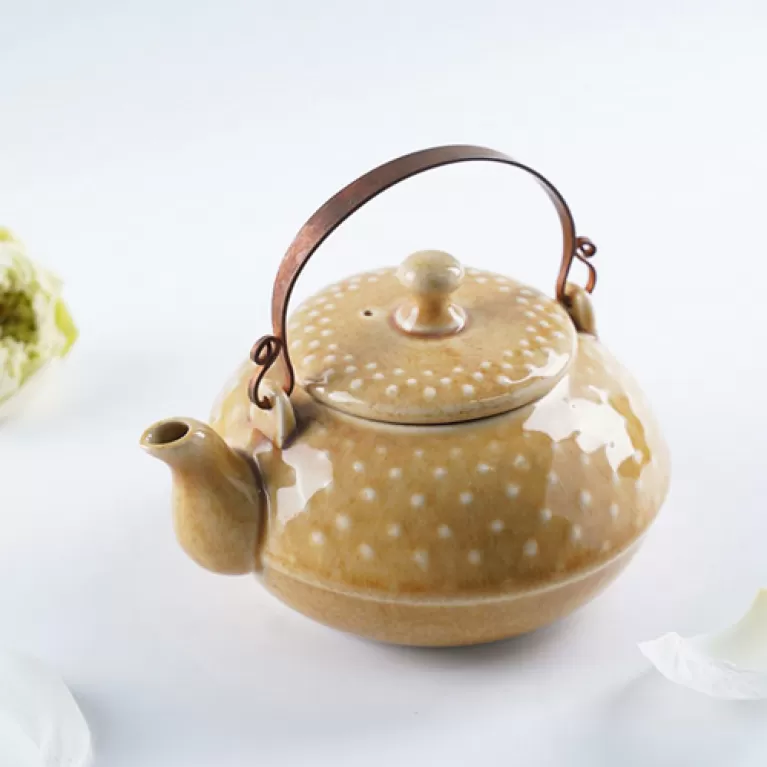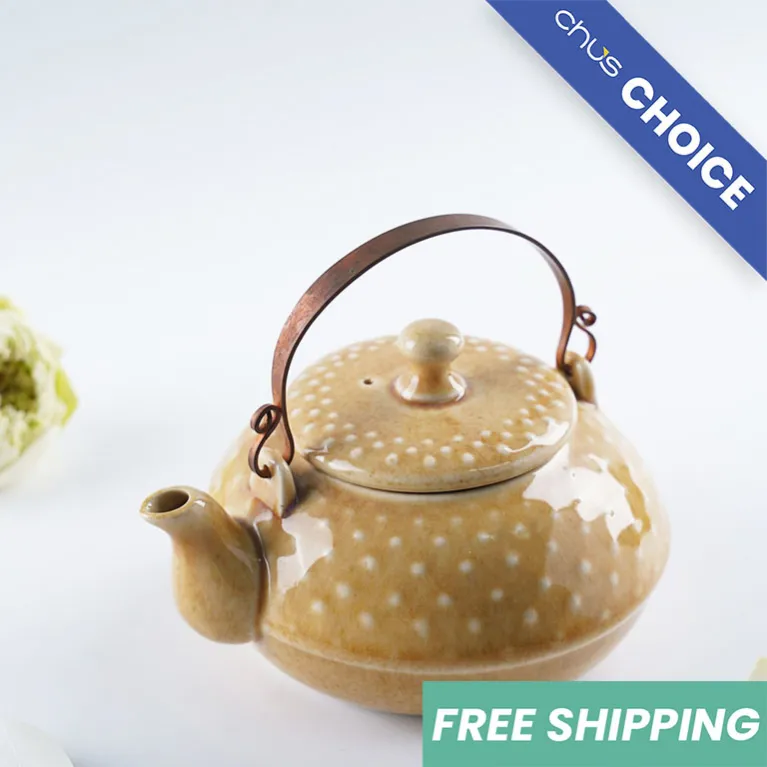Specifications
- Size: 16 x 18.5cm
- Materials: Ceramic
Description
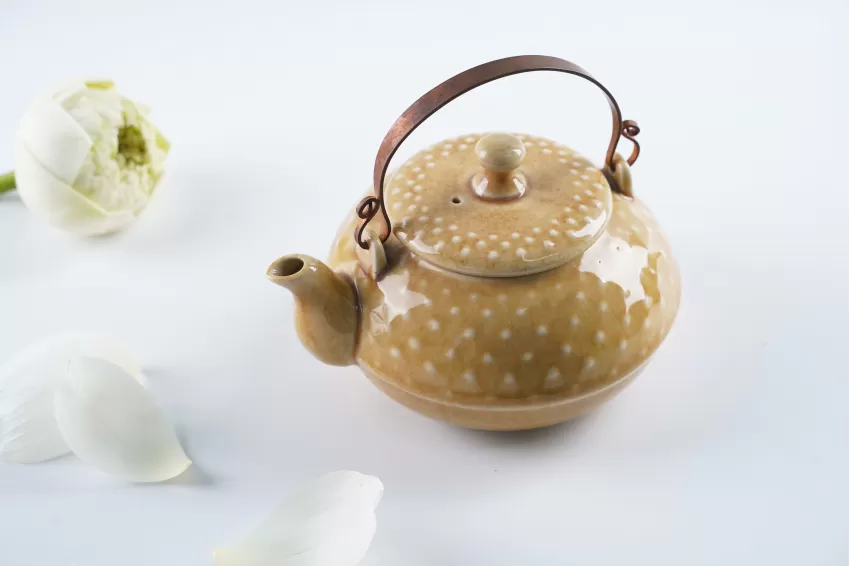
Nostalgic in design, the Japanese Dotted Teapot in the Harvest Gold Collection from Dong Gia Ceramics gives you a feeling of relaxation and peace when used.
The product design is based on inspiration from Japanese culture, bringing sophistication and full of subtlety. In particular, the copper handles create an attractive highlight for the product.
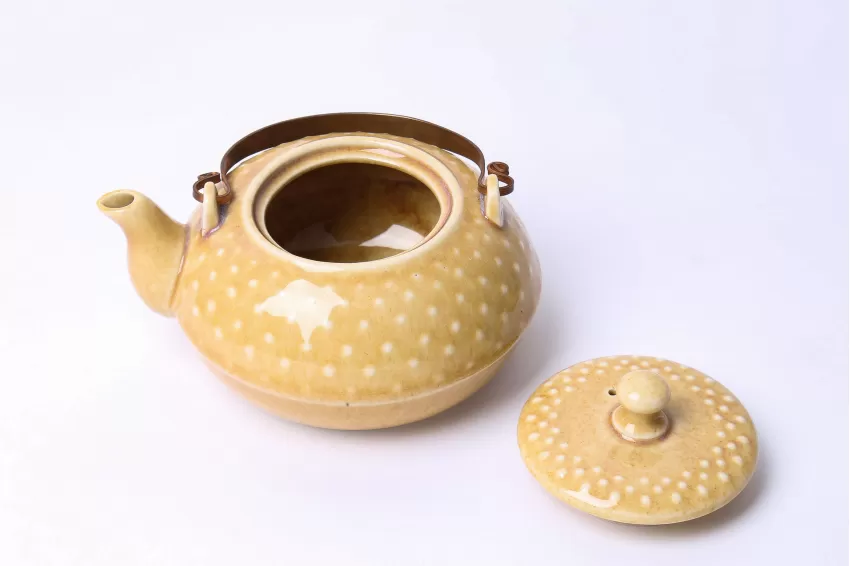
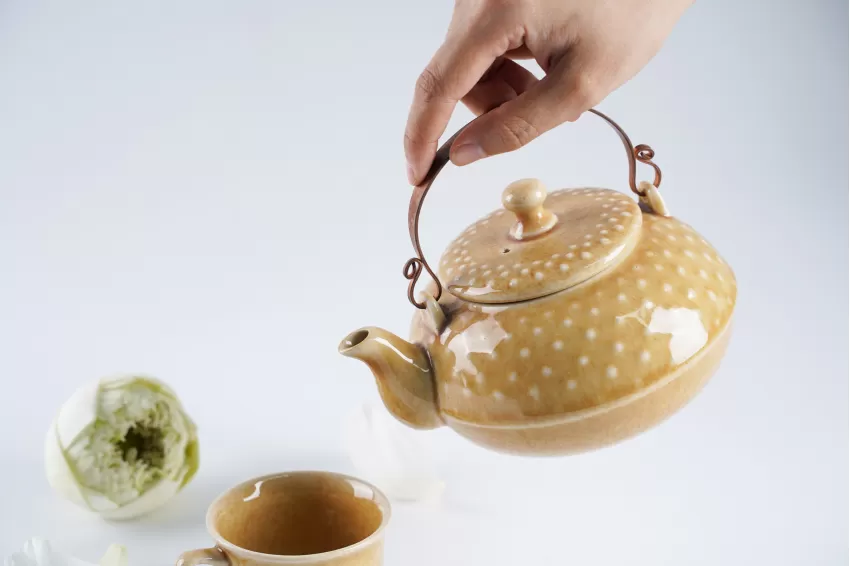
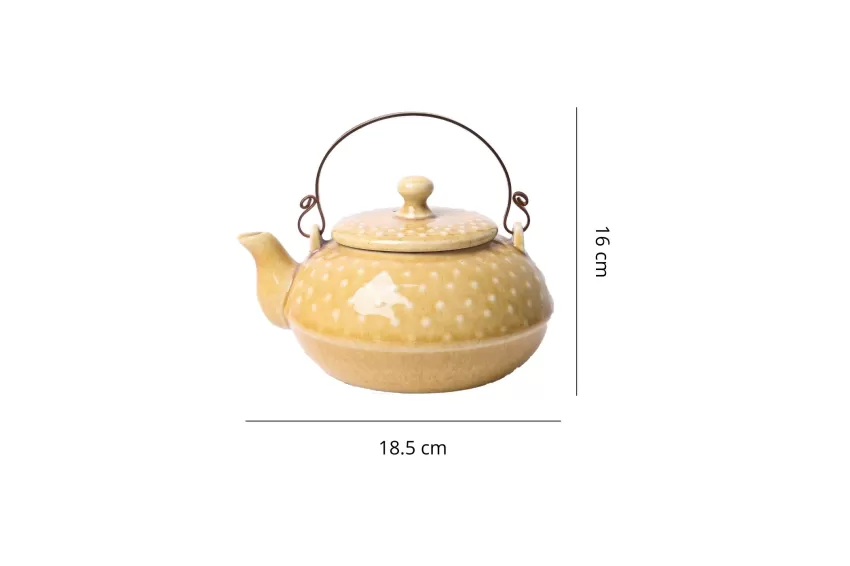
Chus note
Special note
Why we CHUS it
About Gốm Đông Gia

In 2006, with the desire to create handcrafted products with the aesthetic and sustainable value from local materials, Phan Thuy Mai and her husband - Francois Jarlov, a French enamel color artisan, established Dong Gia Ceramics.
When it comes to ceramic products most people will think of white ceramic items with blue patterns as details. At Dong Gia Ceramics, a brand from Vietnam that specialises in unique ceramics products, the familiar ceramic material has been given a new look which has a higher aesthetic value as well as skillful techniques involved. This peculiar technique is the art of fire glaze on ceramics. This technique has existed since the 19th century. However, many historical events have caused this art to fade away. Therefore, the art of glaze inadvertently adds value.
After research and discovery, Dong Gia Ceramics has chosen clay in the northern region of Vietnam as the raw material. This soil is flexible and rich in kaolin, which is very suitable for the glaze inadvertently. Because of that, Dong Gia Pottery has built its ceramics workshop right in Bat Trang pottery village.
Each product delivered to customers not only contains the quintessence of enamel art and the skillful workmanship of artisans, but also embodies the beauty of Vietnamese culture and tradition.



